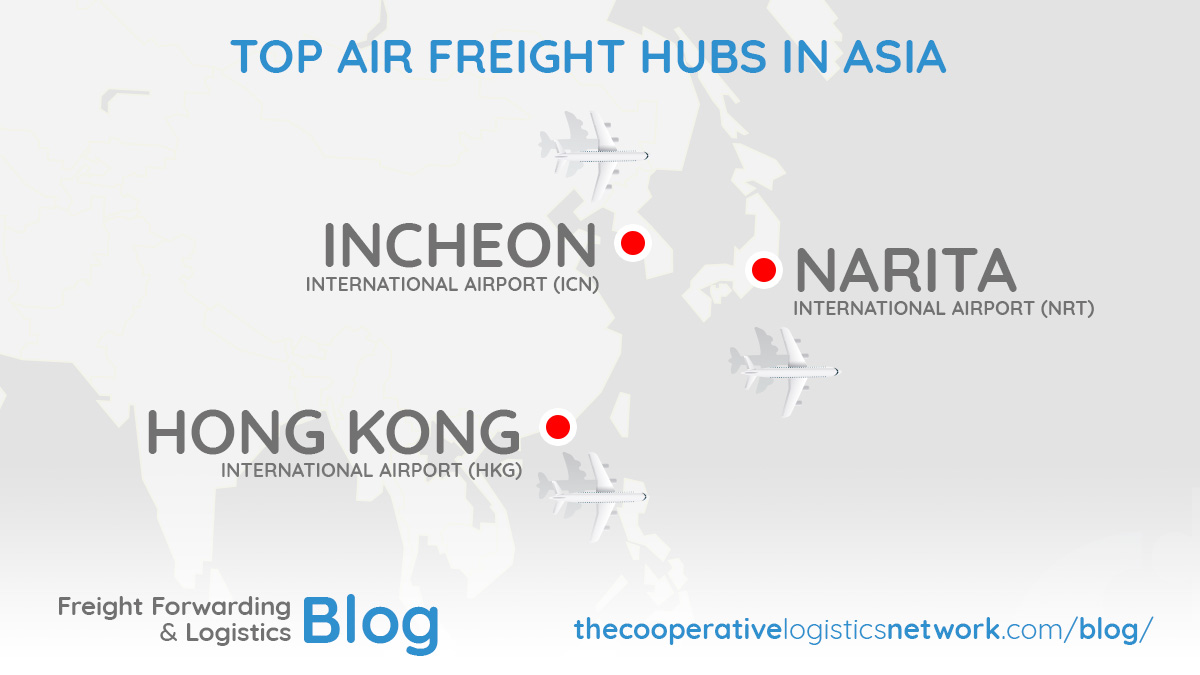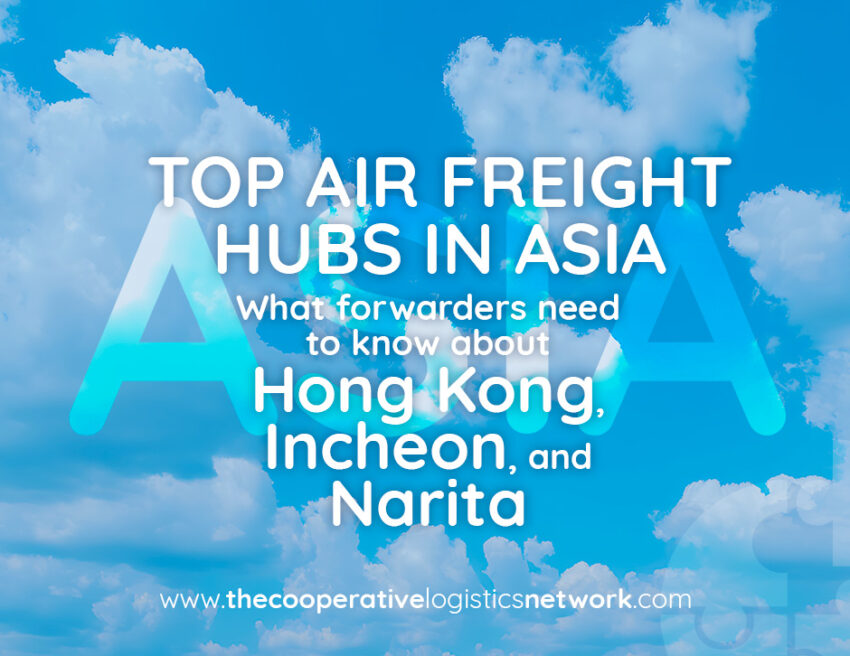Asia sits at the heart of global air cargo. With world-class infrastructure and nonstop trade flows, the region drives the movement of high-value, time-sensitive goods across continents. If you’re a freight forwarder aiming to stay relevant and profitable, you need to understand which Asian hubs matter most and why. In this post, we break down three of the region’s most important airports for air freight: Hong Kong (HKG), Incheon (ICN), and Narita (NRT). From cargo volumes to connectivity, we’ll cover what sets each apart and why they should be on your radar.
Why the Top Air Freight Hubs in Asia Matter for Freight Forwarders
Asia is not just the factory of the world; it’s also its expressway. From electronics and automotive parts to pharmaceuticals and e-commerce goods, air freight routes across Asia handle an immense volume of time-sensitive cargo. For independent freight forwarders, having reliable partners and an understanding of how these hubs operate can make or break a shipment. The top air freight hubs in Asia offer advanced cargo handling, efficient customs clearance, and global connectivity, key ingredients for keeping clients happy and cargo moving fast.

Hong Kong International Airport (HKG): The Titan of Asian Air Cargo
If there’s one name that always comes up in air freight discussions, it’s Hong Kong.
Why it matters:
Hong Kong International Airport has consistently ranked as one of the top air cargo airports in the world by volume. In 2024, it handled over 4.9 million metric tons of cargo. Its strategic location on the Pearl River Delta gives it access to some of the most concentrated manufacturing zones in southern China, including Shenzhen, Dongguan, and Guangzhou.
Highlights for freight forwarders:
- World-class infrastructure, including dedicated cargo terminals.
- 24/7 operations with minimal weather disruption.
- Competitive lead times and tight transit schedules.
- Close integration with sea freight options via nearby ports.
Pro tip: If you have clients shipping electronics, perishables, or high-value goods, Hong Kong’s speed and reliability make it a prime gateway.
Incheon International Airport (ICN): South Korea’s Logistics Powerhouse
South Korea may be better known for cars and semiconductors, but its logistics infrastructure is no less impressive. Incheon International Airport is a key driver of the country’s export economy and one of the top air freight hubs in Asia.
Why it matters:
Incheon handled over 2,946,902 tonnes tons of air cargo in 2024 and serves as a central hub for Northeast Asia. It’s particularly strong in e-commerce fulfillment and high-tech exports, with leading global carriers such as Korean Air Cargo and Asiana Airlines operating large-scale cargo operations.
What sets Incheon apart:
- A cargo terminal capacity of over 5 million tons/year.
- Fast customs clearance processes (some of the best in Asia).
- Focus on cold chain logistics and pharmaceutical handling.
- Integration with tech-heavy industrial zones like Seoul and Suwon.
For freight forwarders: Incheon is a strategic option for shipments into Japan, China, and Southeast Asia due to its strong connectivity and quick turnarounds.
Narita International Airport (NRT): Japan’s Reliable Freight Gateway
Narita may not be the flashiest airport in Asia, but it is one of the most dependable.
Why it matters:
As Japan’s main international cargo airport, Narita handled around 1.95 million tons of air freight in 2024. Located near Tokyo, it serves as the entry and exit point for Japan’s complex manufacturing and tech exports, especially precision machinery, automotive components, and electronics.
What freight forwarders should know:
- Strong regulatory efficiency and customs predictability.
- Comprehensive services for temperature-sensitive cargo.
- Excellent links to Tokyo’s industrial zones and sea ports.
Bonus: Narita is known for low congestion compared to other major airports, which helps ensure reliable schedules and reduced risk of delays.
Choosing the right hub for the right cargo
Not all air freight hubs are created equal. Freight forwarders need to align their routing decisions based on the nature of the cargo, urgency, destination, and client expectations.
For example, Hong Kong International Airport (HKG) is best suited for electronics, perishables, and luxury goods thanks to its fast processing capabilities and regional access. Incheon International Airport (ICN), on the other hand, is ideal for tech products, pharmaceuticals, and e-commerce cargo because of its rapid customs processes and well-developed cold chain infrastructure. Meanwhile, Narita International Airport (NRT) is particularly efficient for automotive components, machinery, and temperature-sensitive cargo due to its reliability and relatively low congestion levels.
Understanding the strengths of the top air freight hubs in Asia helps you design smarter, more efficient routes that balance speed, cost, and reliability.
How independent freight forwarders can compete
Here’s the reality: big multinationals have in-house teams and digital platforms to manage complex shipments across Asia. But that doesn’t mean independent freight forwarders are out of the game.
By joining a strong logistics network like The Cooperative Logistics Network, independent forwarders get access to:
- A global network of 370 reliable agents in over 140 countries
- Powerful digital tools like FreightViewer to generate instant air freight quotes
- Annual face-to-face meetings that build trust and drive new business
- New business opportunities from trusted and vetted logistics companies
If you’re booking air freight out of Hong Kong, Incheon, or Narita, being able to quote quickly, partner confidently, and track accurately gives you a serious edge.
Final Thoughts
The top air freight hubs in Asia are more than just airport codes; they are lifelines in global trade. Understanding how they work, what they offer, and when to use them is a key skill for any forwarder serious about growth. Whether you’re moving smartphones out of Shenzhen, semiconductors from Seoul, or precision tools from Tokyo, your choice of airport matters. And so does the network you’re part of.
Want to be the kind of forwarder who moves smarter, quotes faster, and builds long-term partnerships across Asia?
Join The Cooperative Logistics Network and turn top-tier hubs into everyday routes.


